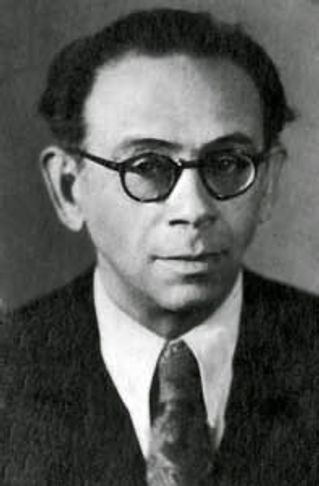A Few Notes AboutKlezmer Music History

The Word "Klezmer"
derives the Hebrew kley/instrument & zemer/song – the musician being the vessel; only recently did the term connote the music itself. Kapelyes (bands) were originally string-dominated – typically two fiddles, a bass or cello, and sometimes a wooden flute or tsimbl (hammered dulcimer-like). As instruments like the clarinet emerged, and/o
derives the Hebrew kley/instrument & zemer/song – the musician being the vessel; only recently did the term connote the music itself. Kapelyes (bands) were originally string-dominated – typically two fiddles, a bass or cello, and sometimes a wooden flute or tsimbl (hammered dulcimer-like). As instruments like the clarinet emerged, and/or Jews were introduced to them in the Russian Czar’s army, for example, they appeared in kapelyes; the process continues today. Bands were male-dominated, but one klezmer (Paul Pincus [1921-1999]) told me his aunt played in the family’s kapelye in Pinsk, Belorus.

Klezmer music was traditionally
played at holidays (Purim, Khanike, after Shabbos) but primarily at khasesnes (weddings). There were slower circle dances like joks/horas (from Romania), more subdued tish/table nigunim, andl ively dances like freylekhs, skotshnes, and shers (“scissors”) - a square dance. (sher being derived either from the dance form, or because many n
played at holidays (Purim, Khanike, after Shabbos) but primarily at khasesnes (weddings). There were slower circle dances like joks/horas (from Romania), more subdued tish/table nigunim, andl ively dances like freylekhs, skotshnes, and shers (“scissors”) - a square dance. (sher being derived either from the dance form, or because many non-professional klezmorim were barbers!). By the 19th century, the sher was a women’s dance – as were the polka, waltz, mazurka and quadrille - but later (and previously), a mixed dance. Dena remembers her mother a”h recalling that her aunts – born in Kiev in the late 1800s - had to drag their husbands onto the dance floor in NY when a sher started.

Klezmorim were first mentioned
Klezmorim were first mentioned
in the early 16th century in Prague; by the early 1700s; they had formed guilds in Bohemia and the Polish Lithuanian Commonwealth. Even with the decline of Jewish autonomy when Russia overtook part of Poland in the late 1700s, heads of prominent klezmer families still got to choose who played at which weddings. Klezmer was developed whe
in the early 16th century in Prague; by the early 1700s; they had formed guilds in Bohemia and the Polish Lithuanian Commonwealth. Even with the decline of Jewish autonomy when Russia overtook part of Poland in the late 1700s, heads of prominent klezmer families still got to choose who played at which weddings. Klezmer was developed where Jews lived – Romania, Bessarabia, Poland, and includes important bodies of work from Hasidic dynasties, where the Rebe either composed music (e.g. the Bobov [Galicia] R. Ben-Zion Halberstam ) or hired someone to compose. The oldest klezmer music is lost to us, although traces of it probably are found in the 19th century klezmer music which was recorded in expeditions of the ethnomusicologists Josef Engel, Susman Kiselgof, Sh. Anski , Sofia Magid, and the above-pictured Moshe Beregovski
(1892, Termakhovka, Kiev gubernia)-1962, Kiev. The Beregovski team worked in Ukraine, and their work published in the U.S.S.R in 1934 (see Mark Slobin’s “Old Jewish Folk Music: The Collections and Writings of Moshe Beregovski”, University of Pennsylvania Press, 1982) for both music charts essays by Beregovski and KlezmerInstitute.org for additional ethnomusicological resources.